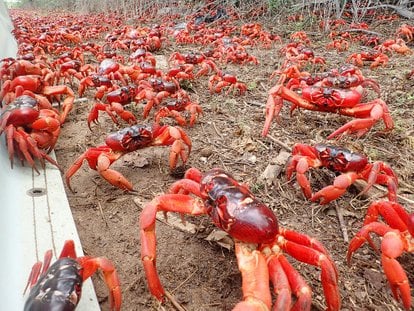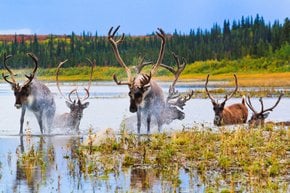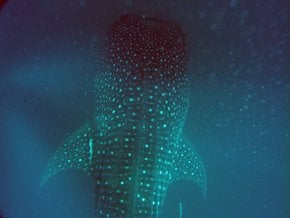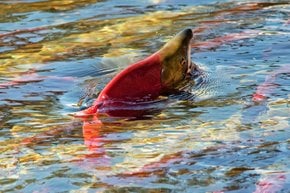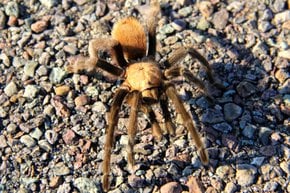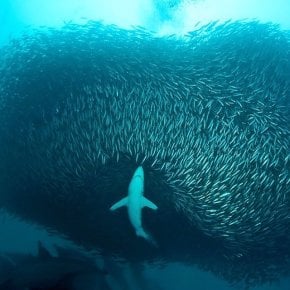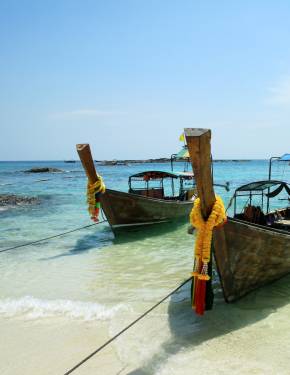Red Crab Migration in Christmas Island 2026
Tens of millions red crabs crawl from the forest to the shore and back in their annual migration
Best time: October–December
Christmas Island, an Australian external territory, becomes particularly captivating during the red crab migration. Each year, around 50 million crabs leave their forested habitat and head toward the shore to breed. As these large crabs swarm across roads, streams, rocks, and beaches, the local community works diligently to ensure their journey is as safe as possible.
Best Time to See Red Crabs Migrate
The migration starts with the first rainfall of the wet season. The red crab migration on Christmas Island happens annually between October and December, depending on the moon phase, affecting the tides that facilitate the journey. Millions of crabs crawl towards the shore during this period. To avoid the crowd and witness the migration in peace, traveling early, around October to early November, is best.
Predicted Red Crab Spawning Dates
Predicted Red Crab Migration Dates for the 2024-2025 Season are November 25-26, 2024, December 26-27, 2024, and January 24-25, 2025.
Key Viewing Locations
Greta Beach, Drumsite, Flying Fish Cove, and Ethel Beach are some of the best viewing spots on Christmas Island to witness the red crab migration. The Island's Boardwalk, Dales, and Blowholes offer unique views of the crabs' journey. You will also see crab bridges built over the roads. These are great places to stand and watch the flow of crabs.
Guided Tours
A guided tour through the rainforest or car hire through the national park provides opportunities for forest sightings. The tour spans 5 hours over two days and costs AUD$150 per adult and AUD$75 per child, with infants free of charge.
Why Red Crabs Migrate?
Red crabs across the island simultaneously leave their homes and march towards the ocean to mate and spawn, with males leading the migration and females joining along the way. The moon's phase guides the timing and speed of their journey, as red crabs spawn before dawn during a receding high tide in the last quarter of the moon. Remarkably, they time their departure to match this lunar event.
The migration begins with the first rainfall. If rain arrives close to the spawning date, the crabs must move quickly. If the rain comes early, they may travel more slowly, stopping to eat and drink. If rain is delayed past the optimal spawning date, some crabs will remain in their burrows and migrate the following month.
Mating, Spawning & Hatching Process
Larger male crabs typically reach the sea first but are soon outnumbered by females. After their long journey, the crabs refresh themselves in the sea. Males then dig burrows on lower terraces, often fighting over space. Females join the males to mate, then stay in the caves to produce up to 100,000 eggs. After mating, male crabs take another swim in the sea before beginning their journey back home.
When the moon is in its last quarter, egg-laden females gather on the shore, and as high tide turns before dawn, they release their eggs into the sea. The larvae hatch and are carried out to sea, growing through several stages before becoming megalopae and eventually tiny crabs. These crabs then march inland to the plateau, where they hide for their first three years. Most larvae do not survive due to predators, but occasionally, a large number of crabs make it, sustaining the island's population.
Distance
Even though the distance is short enough, stretching over less than 5 km, the roads are deliberately closed during that period, and bridges are built across the parks to ensure convenient movement; still, hundreds of thousands are reported to be killed as the route lies through a human habitat. Nevertheless, most crabs reach the shore, lay eggs, and return to the forests.
Human Impact
Red crabs on Christmas Island face significant challenges during their annual migration due to habitat loss, vehicular traffic, plastic pollution, and garbage. These factors can lead to physical injuries and death for the crabs. To protect them, the government closes the roads, builds bridges across crab paths, and posts warning signs. Community groups actively patrol roads, build crab crossings, and conduct vehicle patrols to reduce human impact.
Conservation programs invite visitors to participate in beach clean-ups and crab crossing construction. Islanders encourage tourists to avoid driving during the migration, be aware of crab paths, and support local conservation efforts through donations.


